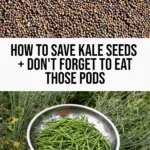
Love it for its nutrients, or hate listening to all the hype, kale is here to stay.
Literally. Plant it one year, and if you allow it to spend the winter, it will continue to take up plenty of space in the garden and produce hundreds of seeds from a single plant.
As you might have guessed, yes, that’s what makes kale a biennial. In the first year, you’ll be able to harvest all the leaves you care to sink your teeth into. In the second year, it will flower and produce seeds.
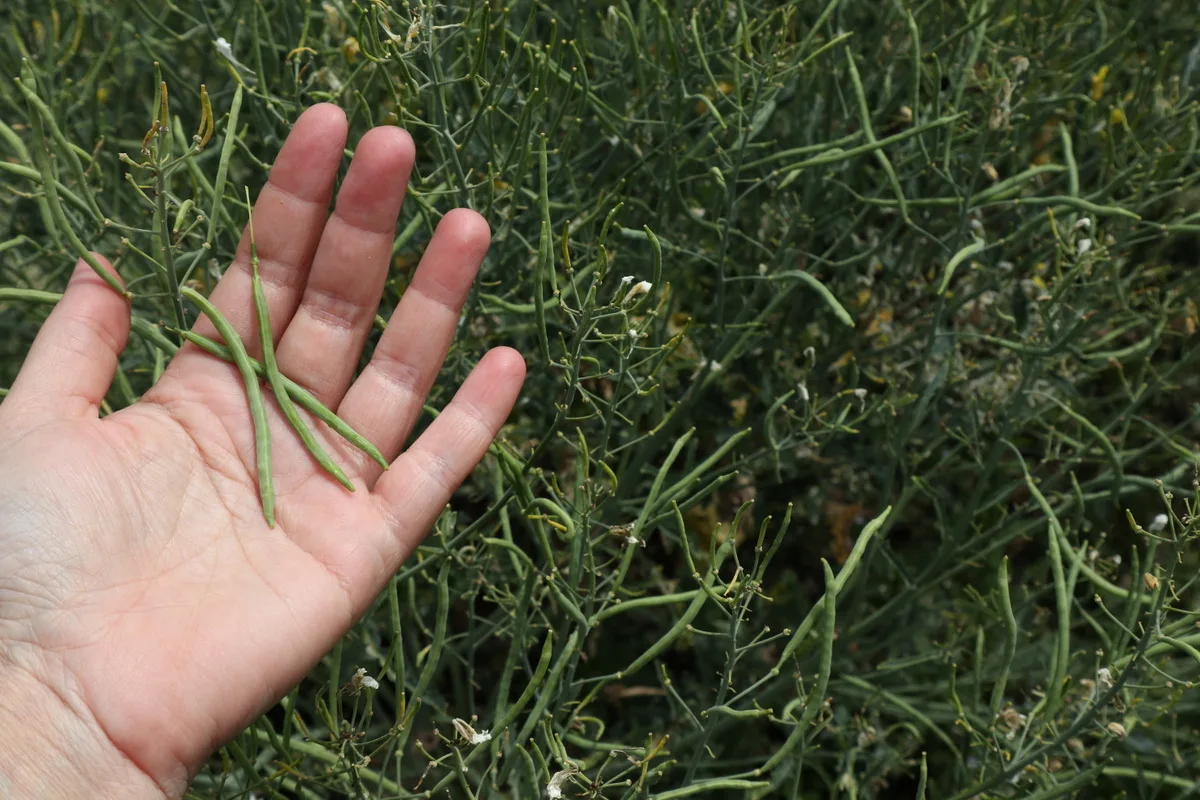
Kale Flowers and Unripe Pods
In order to truly experience the process of harvesting kale seeds, you’re going to have to grow some in your garden. Here’s how to grow cut and come again kale if you are just getting started.
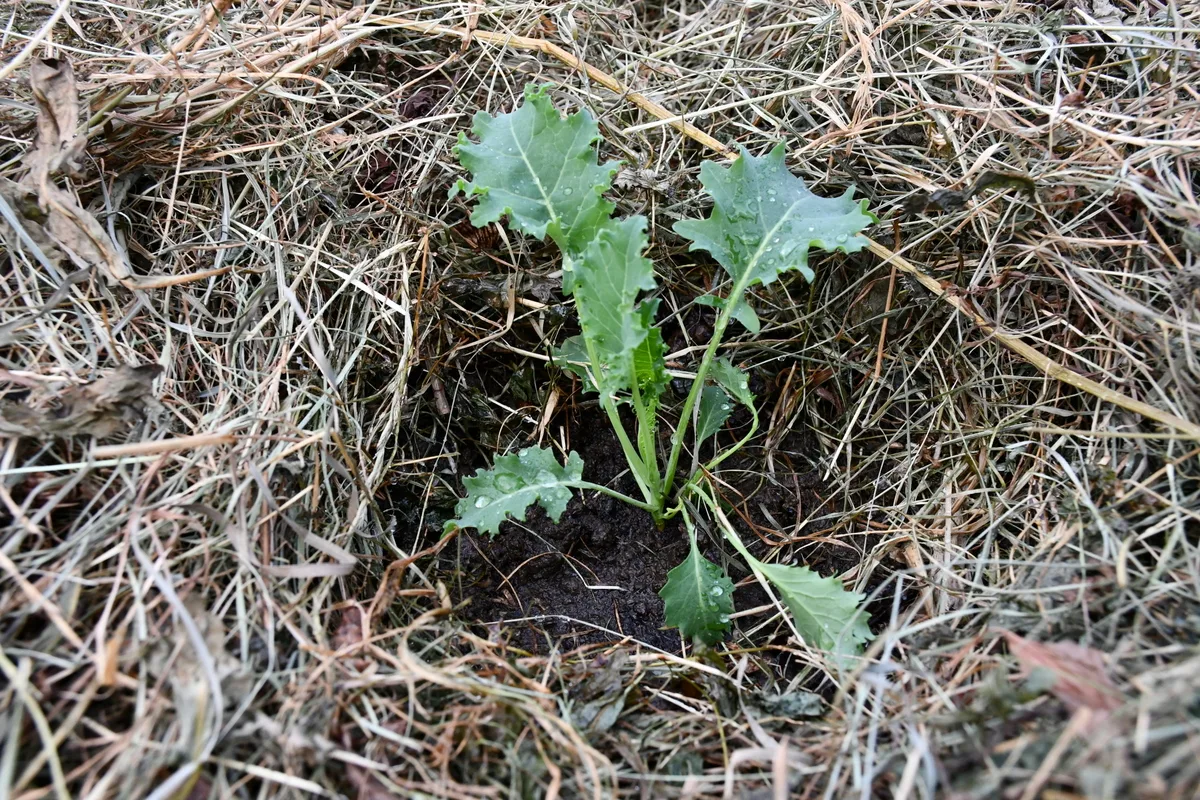
If you’ve made it through the first leafy season or are just coming to the end of it now, listen up.
Kale is the ultimate winter vegetable (sorry Brussels sprouts) that keeps on giving. We were still breaking off the occasional green kale leaf until the end of February – then each plant gave more fresh ones in early May, just before it started blooming.
And then we missed the beautiful yellow flowers when we were on vacation. That’s just how gardening is, but we did capture this image before we left the garden to its own fate (it did suffer a bit in the drought whilst we were away, so we started over in June…)
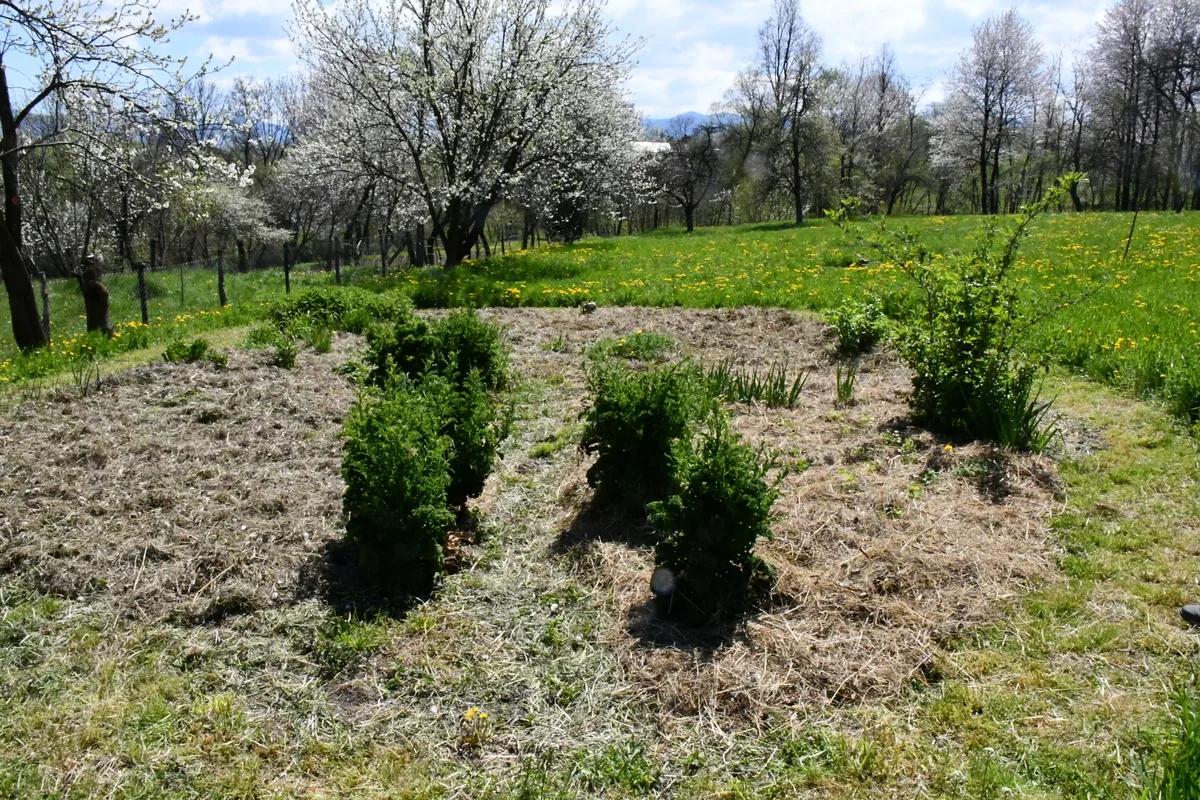
If you manage to see your kale in the flowering stage, go ahead and pick a handful of yellow flowers for fresh eating.
Toss them on your fried egg, add them to an egg salad sandwich, whatever you do, know that they are perfectly edible – and tasty too.
You’ve probably heard that Brassicas tend to bolt – that is, go to seed too early. This may be the case for the arrival of flowers or not. It’s entirely possible that the plant wants to produce as many seeds as it can instead.
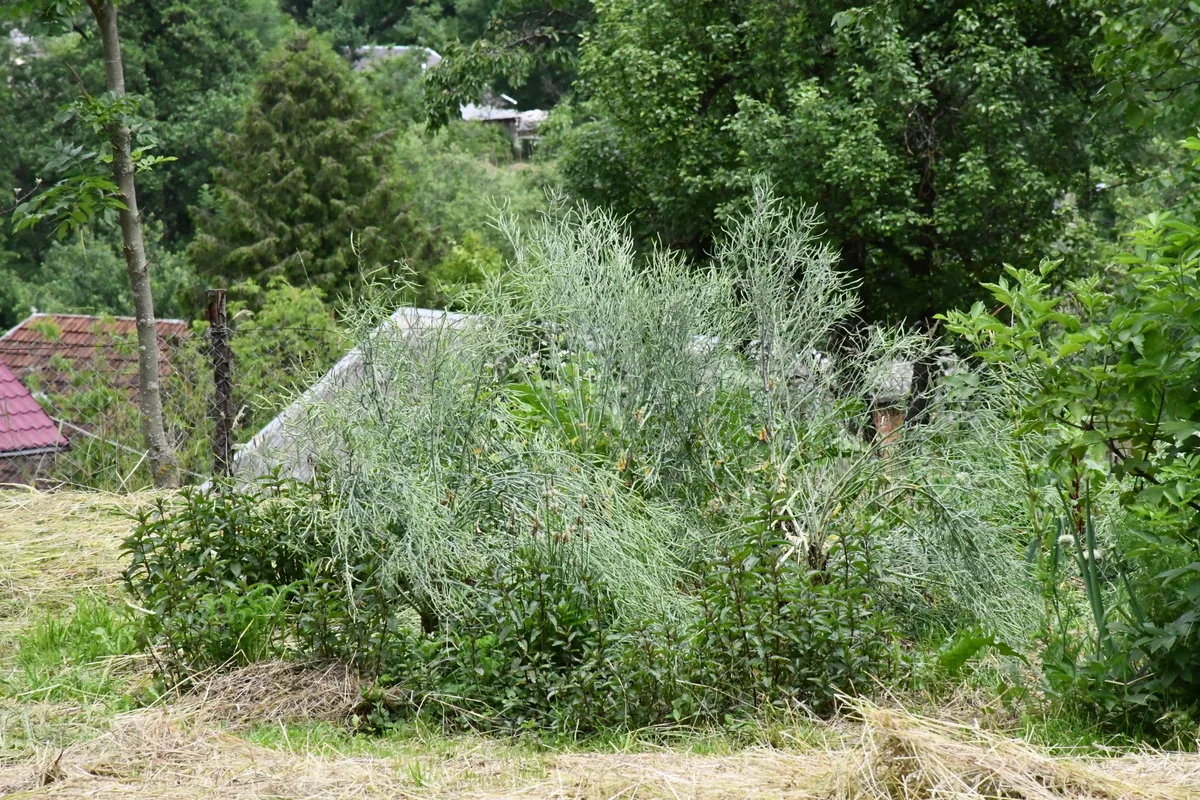
So, when you see those first flowers and kale florets, snatch them up and eat them. The plant is not reaching the end of its life. It’s starting one anew. And it’s about as nutritious as anything you can harvest from the garden so early in the season.
The crazy part is they taste even better than those long leaves kale is known for.
But we’ll get more into this down below in Eat Your Kale Pods.
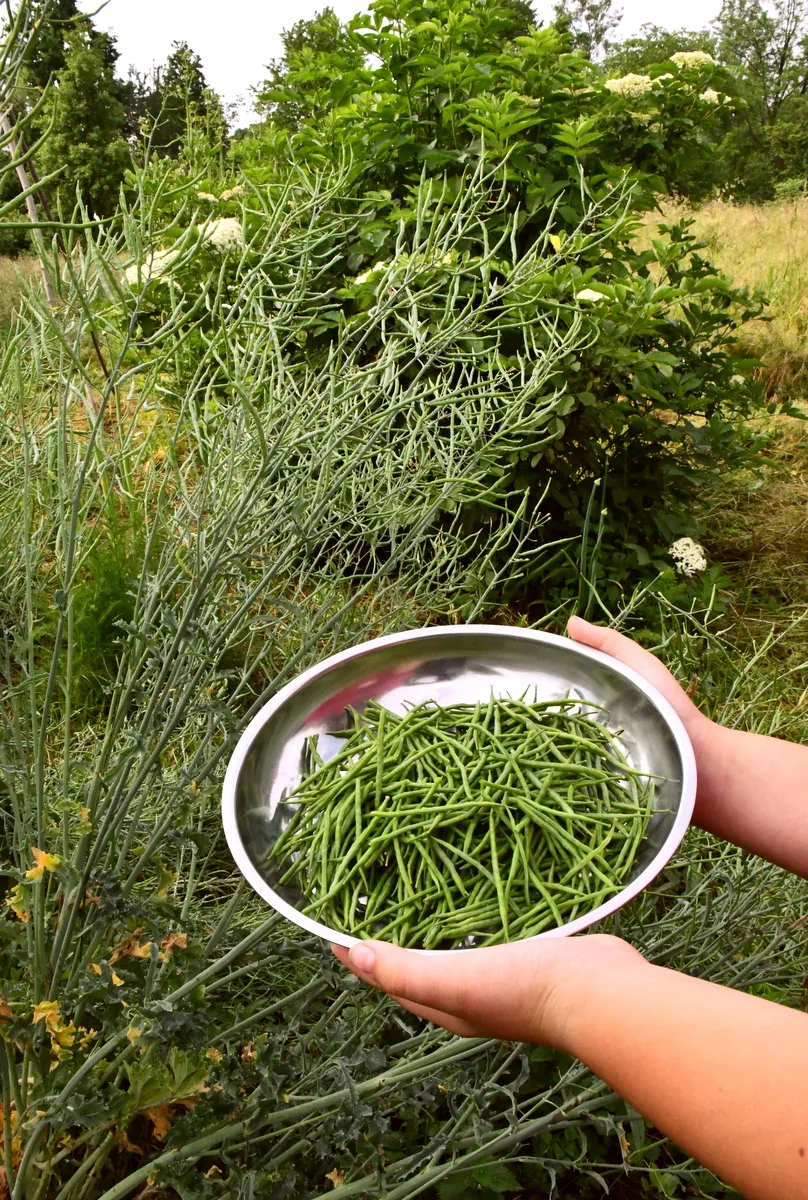
For now, let’s assume you simply want to save seeds; after all, that’s how gardens and gardeners survive.
When to Start Harvesting Kale Seeds
How do you know when to harvest kale seeds?
Well, for starters, your kale plants will need to have overwintered. Then the yellow flowers will come, followed by the pods. While they are green, you can eat them. Once they become too tough, leave them for seeds.
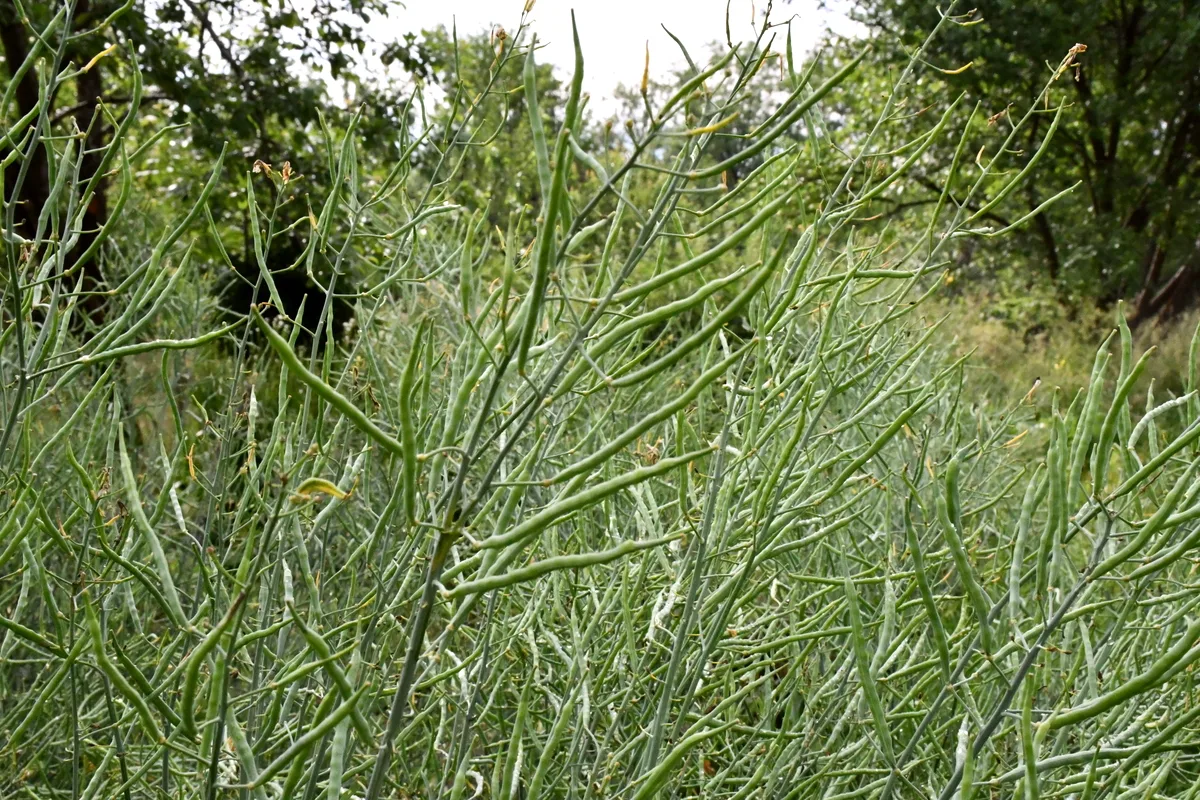
Timing is everything. Harvest too soon, and the seeds will be immature, wait too long, and you’ll have a future forest of kale. Also, keep in mind, not all the plants will be ready to harvest at the same time.
Kale pods start out being fleshy and green, but soon, they’ll begin drying, just as happens with beans. There are various stages of being dry, and while some gardeners break off and harvest the podded branches while they are in a greenish-brown stage, we waited until the time was right for us.
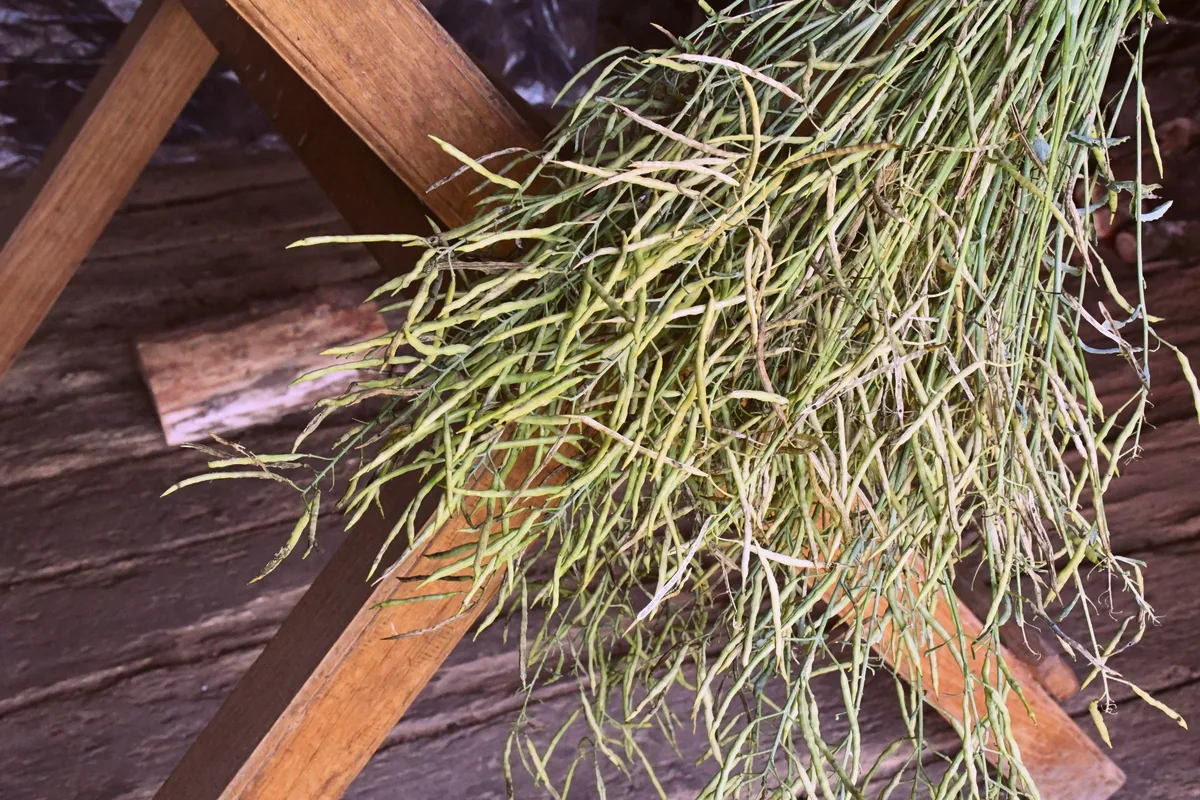
Just before they were ready for harvest, the plants were nearly five feet high. Then they bent their branches.
In our no-dig garden, we let the kale plants become slightly unsightly.
While the lemon balm, mint and yarrow were growing up around them, the life of kale was quickly coming to an end. Luckily, due to a drier summer, the kale pods had plenty of time to ripen and dry on the plant.
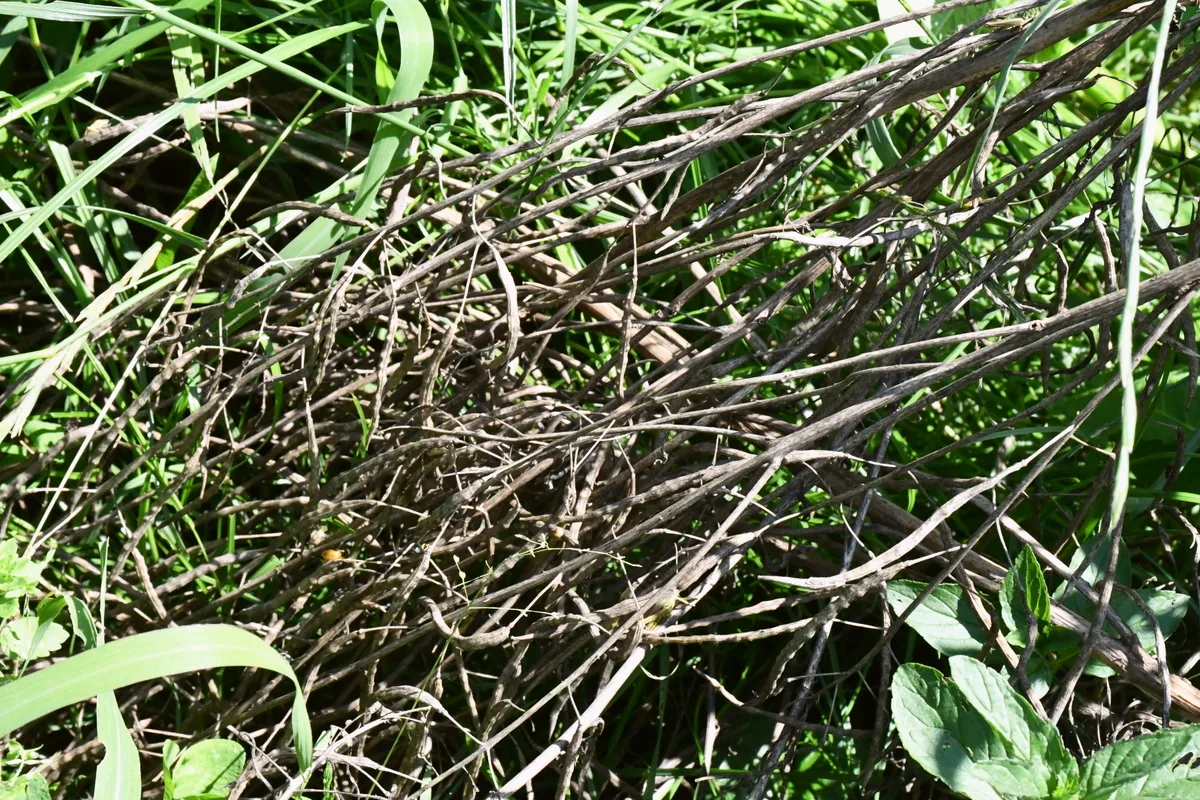
When the weather was just right, we went into the garden and harvested the branches by simply ripping them off by hand and arranging them in bundles of similar maturity of seeds.
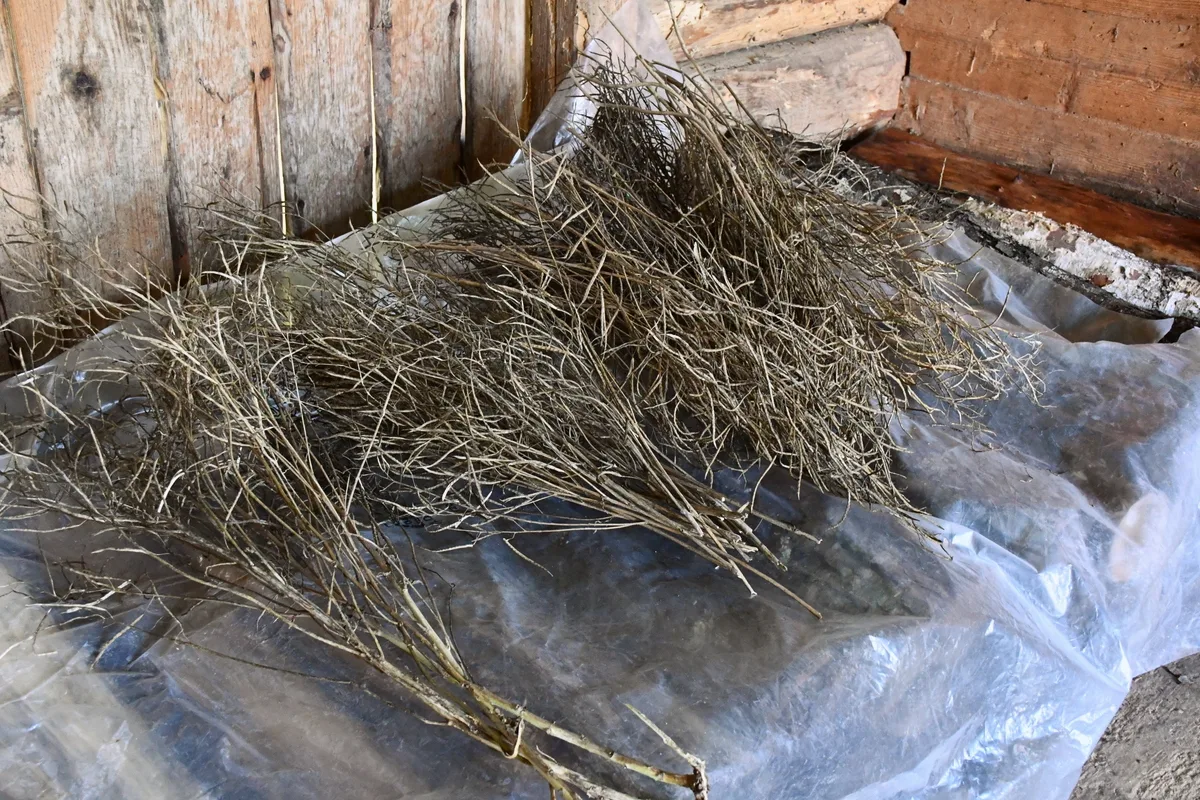
We then stored them in the wood storage for further drying. If you’ve ever harvested and cleaned mustard seeds before, know that kale seeds are far easier on the hands to work with. A lot less spiky and far more rewarding.
Once you deem the pods and the seeds inside them dry enough, then comes the more time-consuming part.
If you allow the kale seeds to stay too long on the stems, there’s a chance they’ll burst open on their own – and surely this happened in our garden this year. Next spring, we might have a very kale-y surprise.
But hey, it’s free food. And even better when it germinated on its own.
Cleaning and Storing Kale Seeds
Cleaning seeds is a process that should be done outdoors. Ideally, in a place where it doesn’t matter if you lose more than a few seeds and in an area that is easy to sweep when done with the job.
There is no magic way to clean kale seeds. You just have to step right in and get your hands dirty. Start by pulling off a single pod. Crack it open and see what’s inside.
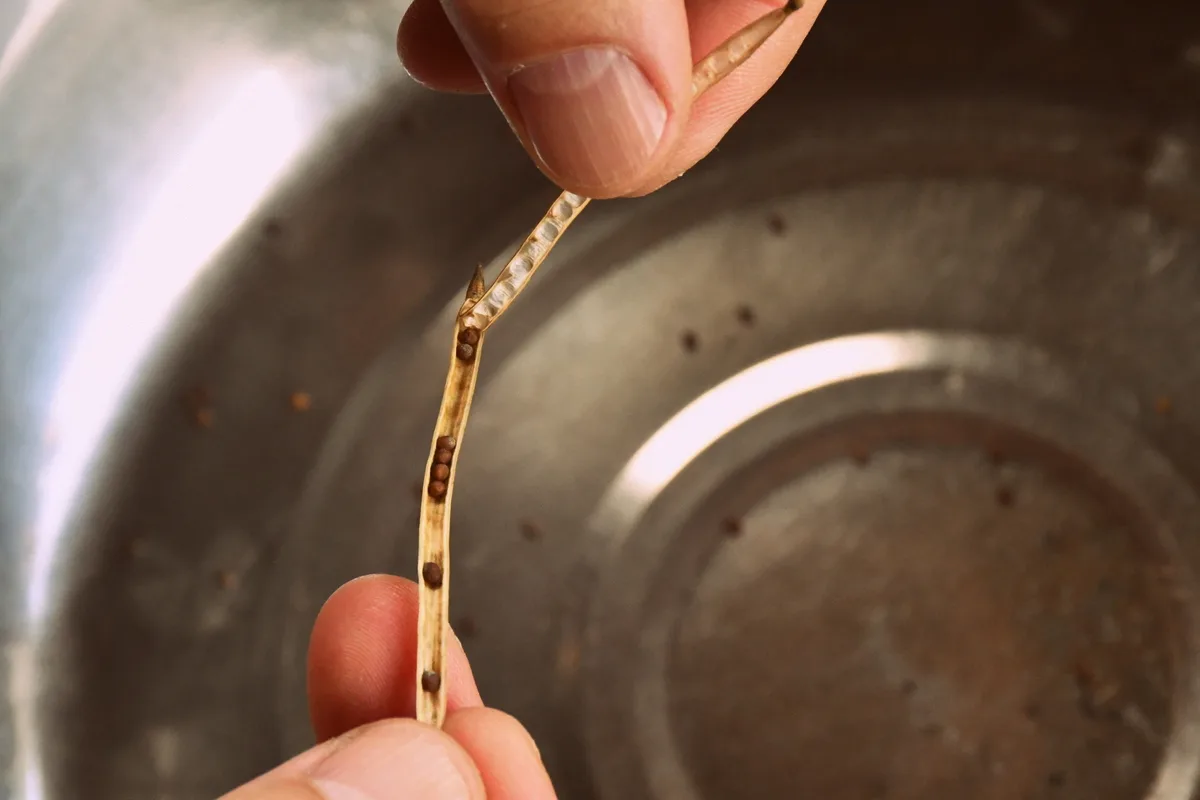
If you’re lucky, there will be several brown seeds all in a row; just watch them come tumbling out. Before I forget to mention it, you’ll want to be breaking the pods open over a large bowl.
Go one by one, breaking open each pod, allowing the seeds to fall out. It’s easy and time-consuming; you’ll get the hang of it real quick and end up with a bowl of seeds.
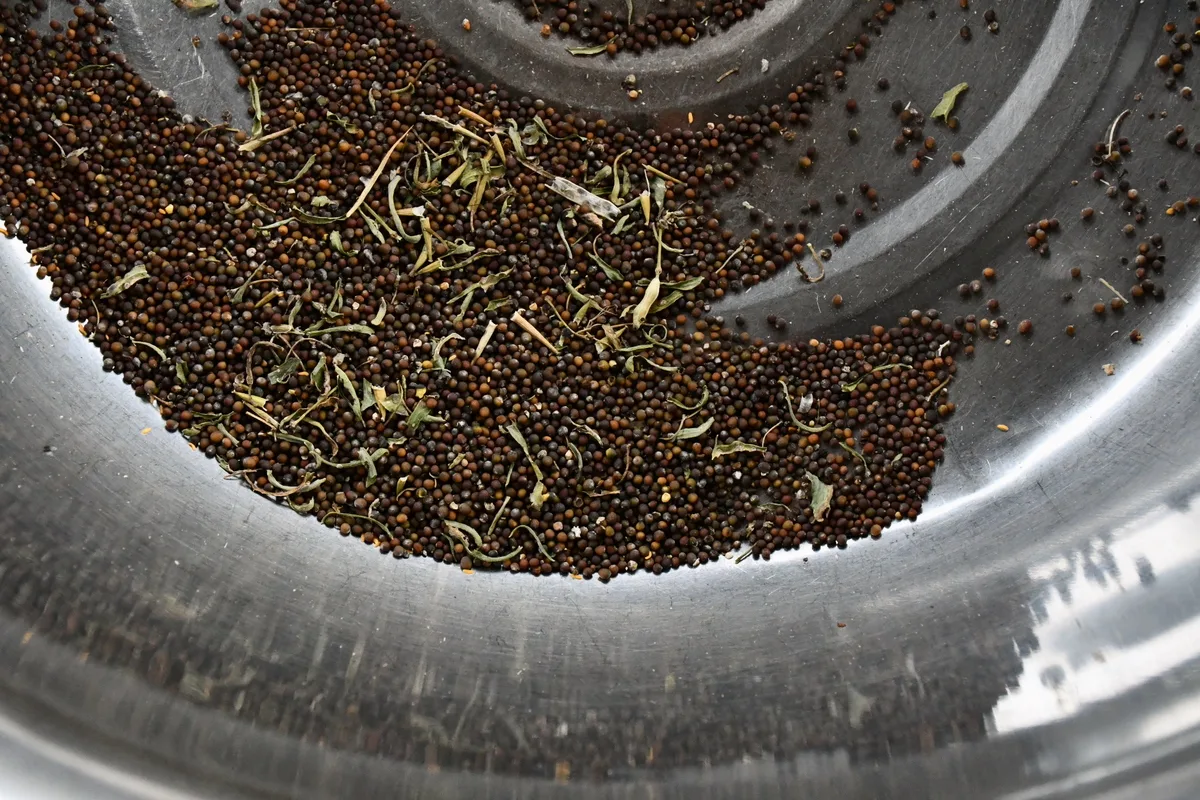
Other gardeners say that it’s enough to dry them upside down in a paper bag for ten to twenty-one days. Then you can shake and dislodge the seeds. I have my doubts about this, yet gardening is all trial and error; it’s completely up to you.
You could also grab a bunch and rub them vigorously between your palms; that might work too.
Now it’s time to winnow the chaff.
To do this takes a little bit of coordination in combination with a wind source. Pour the seeds from one bowl to another (in front of a small fan if you have one; otherwise, a light breeze will do and allow the wind to blow the light chaff away from the heavier seeds.
If you want to save seeds for sprouting, it’s good to get them as clean as possible.
However, if your goal is to save seeds for planting, it’s alright to not be perfect.
You might also try using a strainer or small screen to allow the smaller, less desirable seeds through. This way, you end up with only the best for storage.
What to do with the chaff? Ours started the fire the next morning. Yours might enjoy the compost bin.
How to store kale seeds.
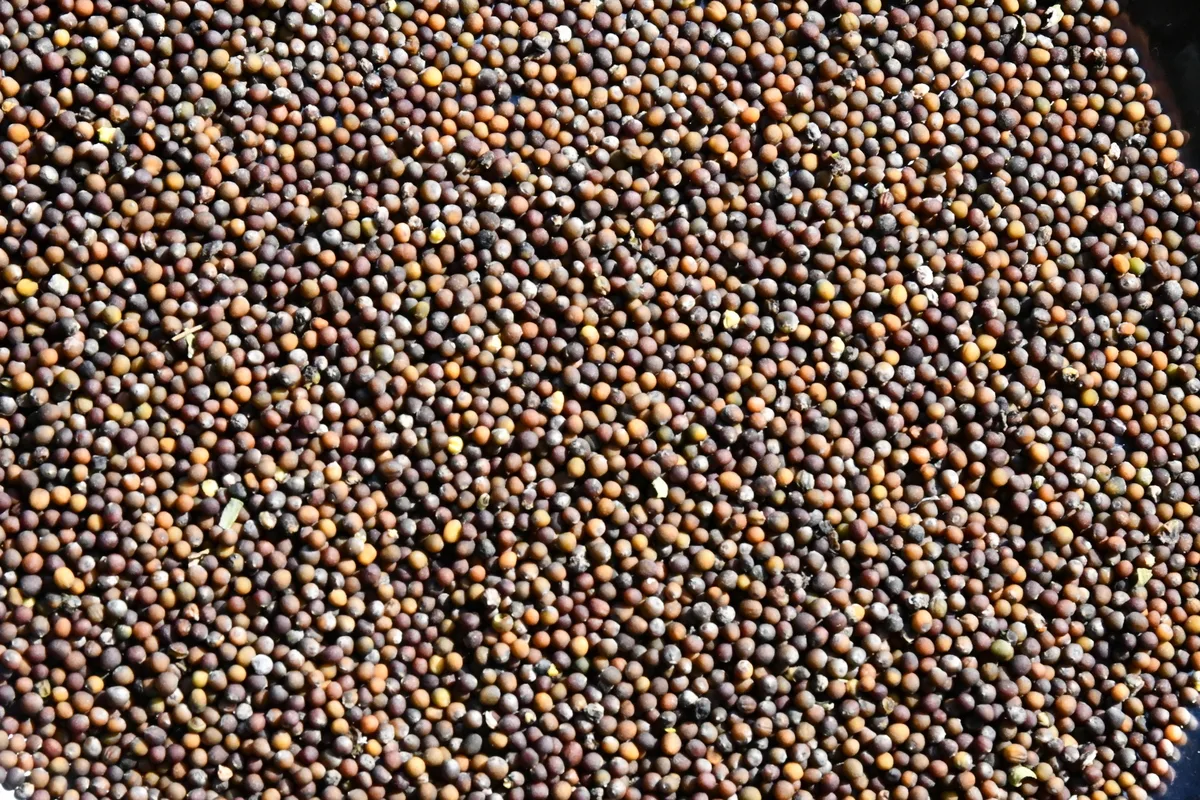
Kale, being a Brassica, means that the seeds look nearly the same as cabbage seeds. Keep this in mind when storing them – be sure they are labeled correctly.
Kale seeds range in color from light brown to gray or black, and a single plant can produce hundreds of viable seeds. Always save more than you think you will need. Enough to plant this year and the next, with enough for sharing and trading too.
Store your seeds in paper envelopes or in glass or ceramic jars. Be sure to label with the variety, the date of harvest and any notable characteristics.
Kale seeds should still be viable even after four years in storage, so long as you keep them in a cool, dark location.
Related reading: How to Properly Save & Store Garden Seeds For Future Planting
Sow More Kale Seeds
If you are a no-dig gardener, sometimes you get really lucky and don’t have to replant, only transplant when spring arrives. You never know what will come up in your garden when you leave the soil to rest.
By that measure, choose those varieties to plant in your garden that are open-pollinated to ensure your reliance on future harvests. This way, you may never even need to purchase seeds again, at least not kale seeds.
Eat Your Kale Pods
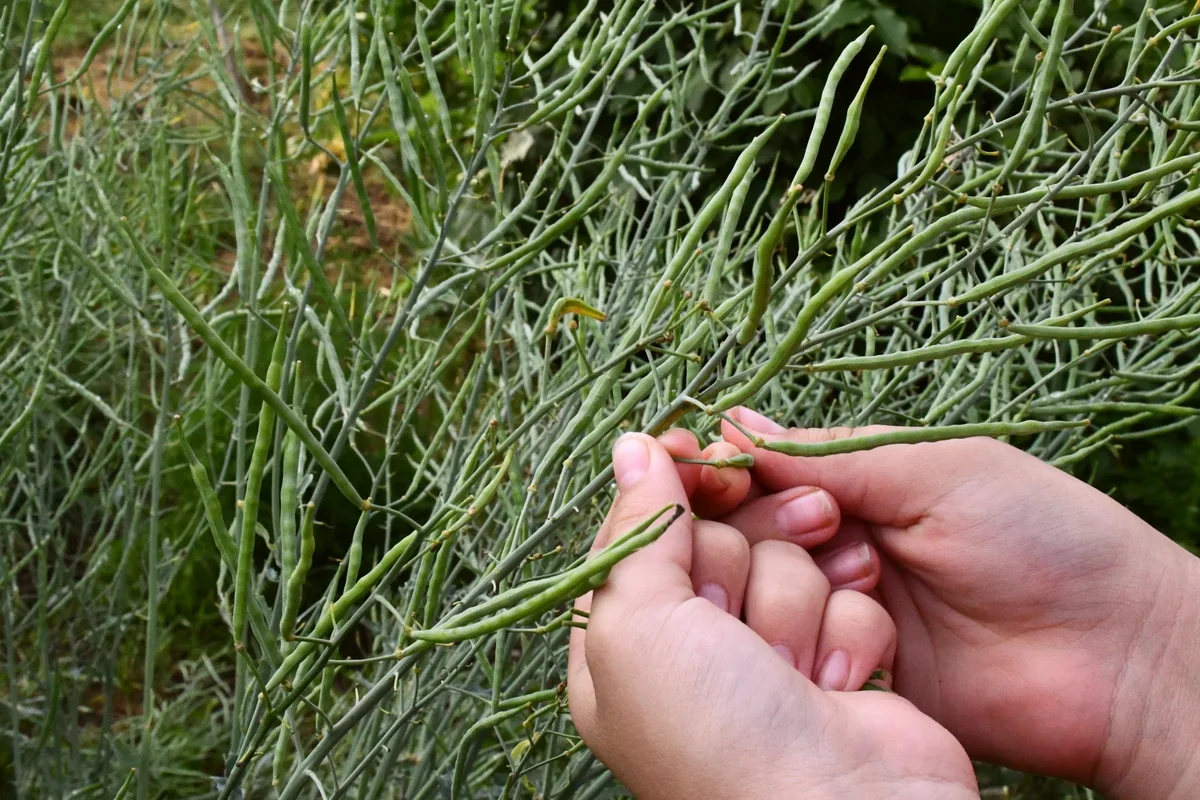
Before the pods come the kale buds. These are the unopened flower heads at the end of each slender stalk. These can appear in early spring (a sign of seeds on the way) or after a heat wave in summer. You’ll want to get to them before they mature or harden, so as soon as you notice them, start picking.
Once the kale flowers open up, they are fair game too.
If you haven’t had the opportunity yet to eat too many flowers, and the prospect doesn’t sound too appealing at first glance, glance a little further. Elizabeth has written a popular article on 30 Edible Flowers You Can Eat Right Out Of Your Garden, which can help open your eyes to a plethora of other fragrant and colorful possibilities in the garden. Nasturtiums are a given.
Leave some flowers, most of them in fact, to turn into pods.
What you are really after here are the kale pods.
I mean, just look at the sea of them.
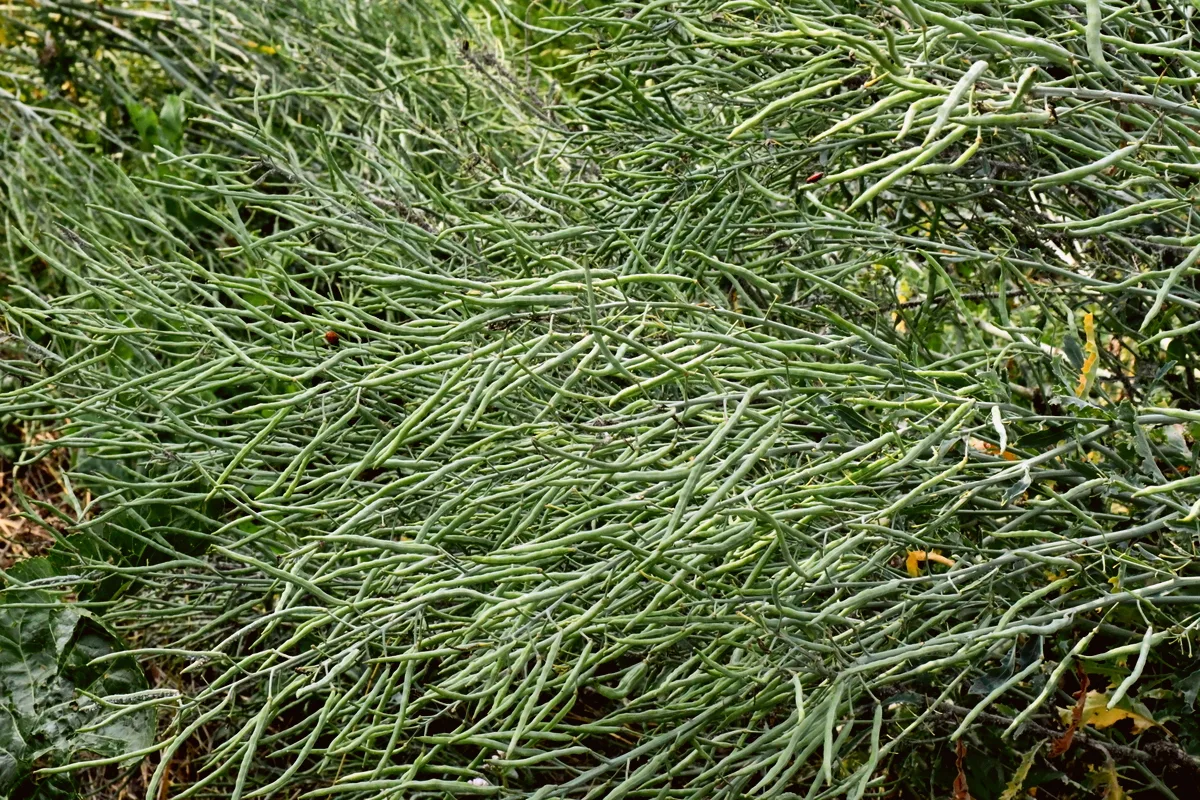
Just like radish pods, kale seeds are not only edible; they are uniquely delicious.
Now, of course, you won’t want to eat these all, either. Be sure to leave plenty for seeds, but take as many as you please to enliven your breakfast, lunch and dinner.
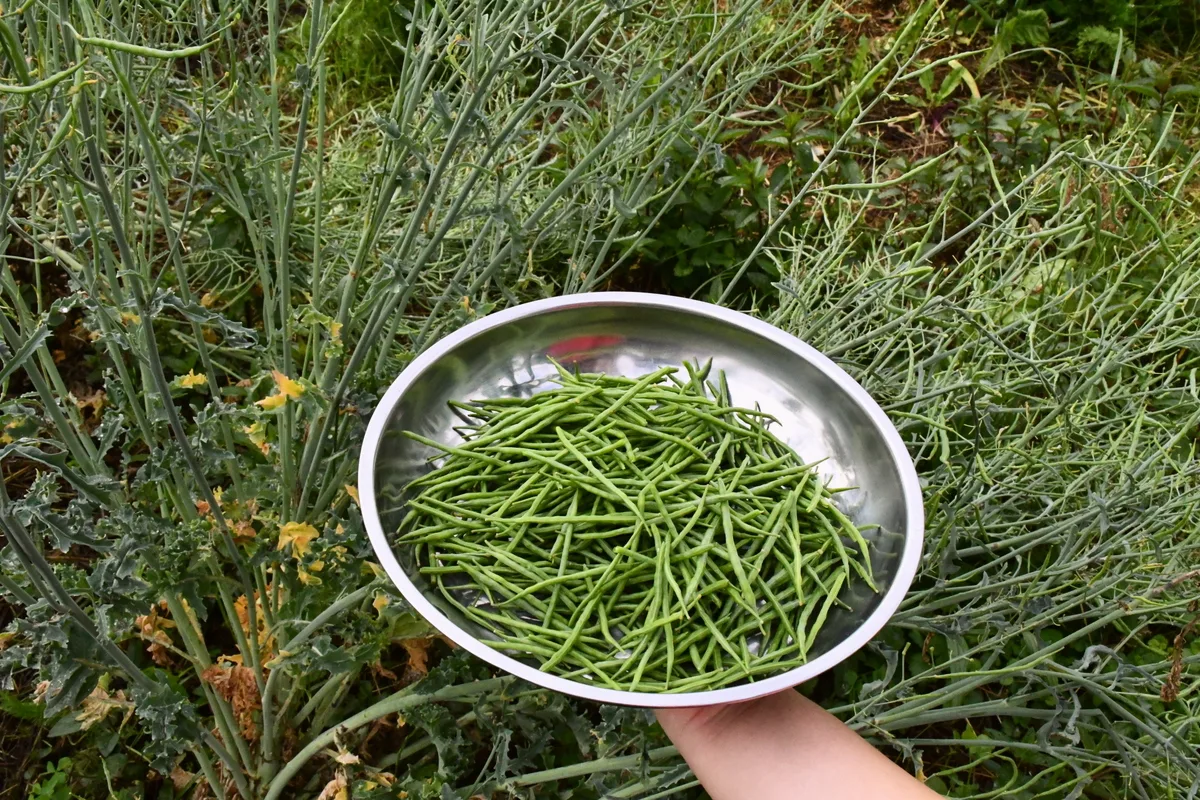
Kale pods have a short shelf life, so you’ll want to be picking them fresh before each meal. Just be sure to do a bit of sampling in the garden to see how tender they are. That being said, their window of edibility is also narrow. The only way to know whether they are crunchy or stringy is to nibble here and there.
Just like a rabbit, only more intentionally.
How to eat kale pods?
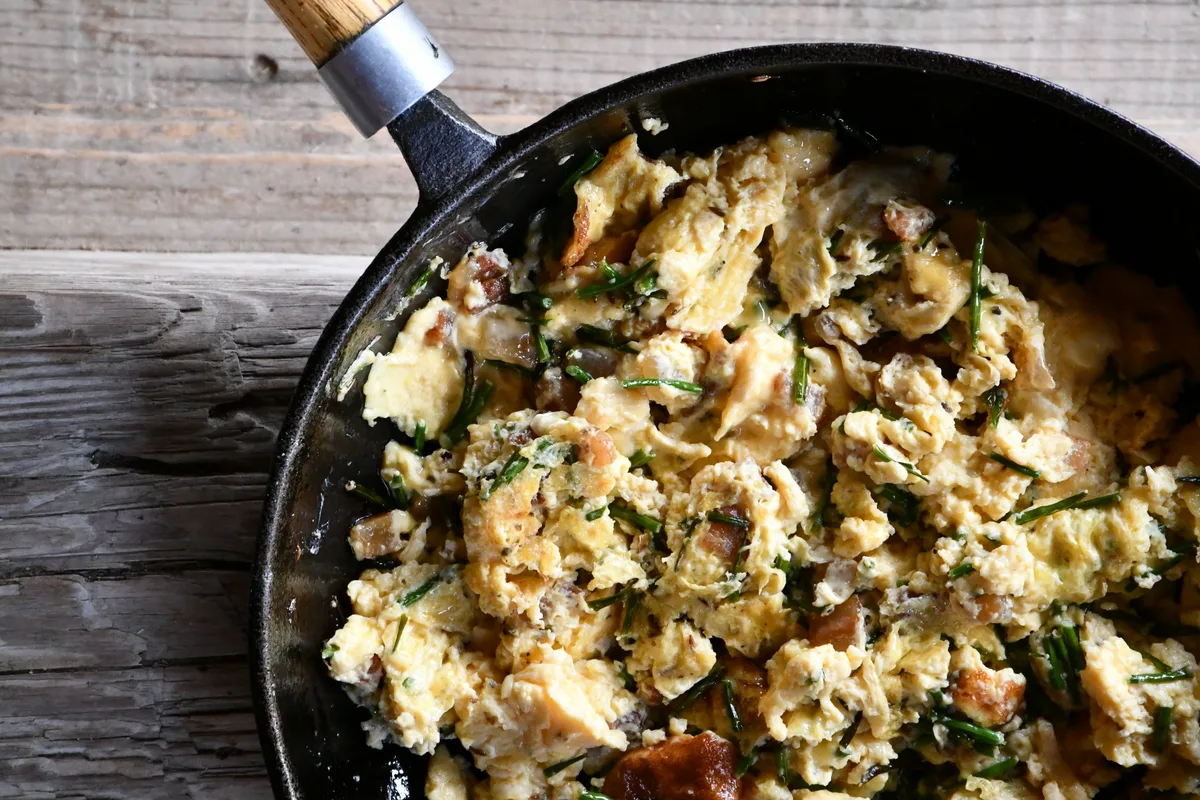
Since there isn’t a lot written about eating kale pods, we’ve come up with our own ways to eat them this year.
Kale pods can be:
- steamed
- stir-fried
- chopped and added to a pan of bacon bits
- added to scrambles
- tossed into pasta dishes
- or mixed into vegetable or broth-based soups
Now it’s your turn to come up with some ideas for eating kale pods. But first, you gotta grow them.

Get the famous Rural Sprout newsletter delivered to your inbox.
Including Sunday musings from our editor, Tracey, as well as “What’s Up Wednesday” our roundup of what’s in season and new article updates and alerts.


